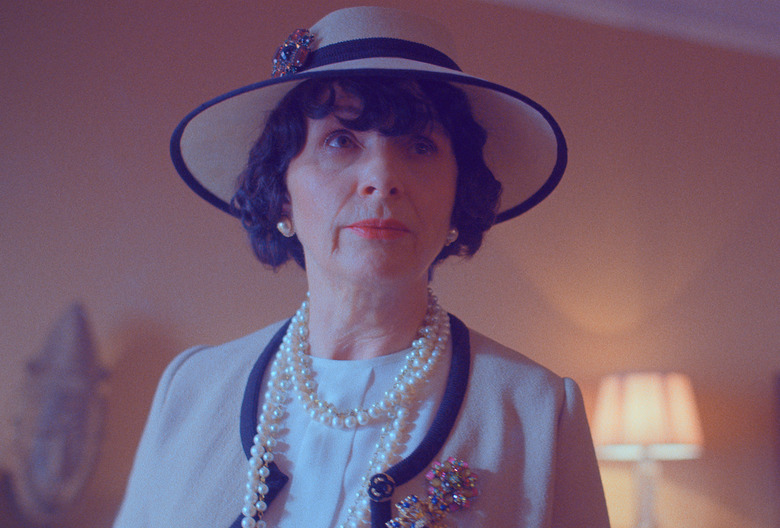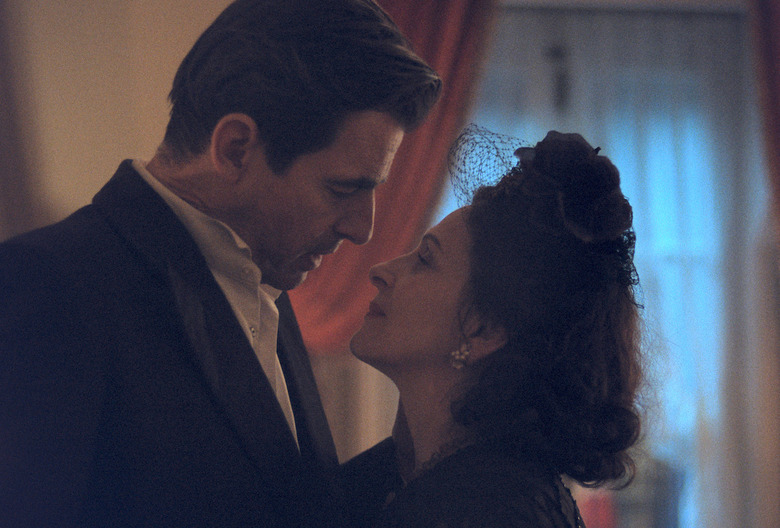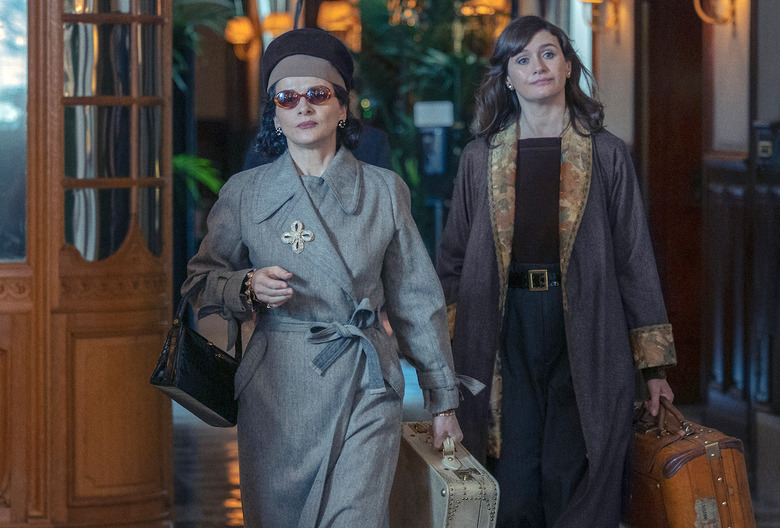The New Look, Explained: Did Coco Chanel Actually Spy For The Nazis? — Plus, Grade The Premiere
Apple TV+'s The New Look, which premiered its first three episodes on Wednesday, in part explores the unsavory parts of Coco Chanel's life — the things that can't be concealed by tweed and pearls.
In Episode 1 of the period drama, Chanel (played by Juliette Binoche) joins Nazi soldiers in a secret meeting in the middle of the night in order to save her nephew, who is being held prisoner. Here, we meet a Baron Hans Günther "Spatz" von Dincklage (Claes Bang), who reveals that the favor is not without strings.
With her nephew safe, Chanel refocuses her attention on her business — which she closed at the onset of the war to avoid designing for Nazis — as she hopes to repay the man who helped her arrange the meeting. But she can't access her funds or get in touch with her partners, who are Jewish and fled to America during the war, so she meets with the president of her bank. He tells her he cannot help, and suggests that she try asking the Nazis.
From there, Chanel's desire to survive the war and reclaim her brand causes her to spiral further into Nazi involvement. In the three-episode premiere, she dines with military personnel who hope to make Berlin the fashion capital of the world; she becomes romantically entangled with Spatz; she goes on a secret mission to Spain. But how much of the series is true? Read on to learn more about Chanel's Nazi ties and the real-life story that inspired the series.
Did Coco Chanel Spy for the Nazis in Real Life?
While it's known that Chanel had a relationship with the Nazis, the extent to her involvement remains murky.
In his book Sleeping With the Enemy: Coco Chanel's Secret War, journalist Hal Vaughan asserts that Chanel's acts of espionage were confirmed in testimony from General Walter Schellenberg (played by Jannis Niewöhner in the TV series) during the Nuremberg trials. But because Schellenberg revealed so much information, his testimony was sealed and only declassified in the 1980s. Chanel reportedly financially supported Schellenberg throughout the rest of his life, even paying for his funeral, to avoid being mentioned in his published memoirs.
For Vaughan, the declassified documents confirmed that Chanel was an agent for German intelligence. He details how in 1943 she worked on a failed mission codenamed Operation Modellhut (German for "model hat"). The operation had Chanel travel to Madrid in hopes of meeting with English Prime Minister Winston Churchill at the British embassy in order to help Germany reach a truce with the Allies, unbeknownst to Hitler. But in a book review for the New York Times, Judith Warner contends that in this mission — the only actual Nazi mission outlined in Vaughan's book — Chanel's involvement "emerges neither clearly nor logically from [Vaughan's] highly detailed telling."
The failed operation is depicted in Episode 2 of the Apple TV+ drama, but the series doesn't approach Chanel, or her motivations, as black-and-white. "As storytellers, we approach it as: Every single person that's alive is more than one person," series creator Todd Kessler tells TVLine.
While much debate surrounds Chanel's involvement as a Nazi spy, she is now widely considered at least a collaborator and a documented anti-Semite. According to Vaughan, during WWII the designer went so far as to leverage Aryan laws against her own Jewish business partners, the Wertheimer family — who own Chanel today.
Still, Kessler says he wanted to avoid assigning labels to the New Look characters, as their lives were too "moment-to-moment" during unprecedented times. "We really approached it without a judgement and to find the compassion, that these people are trying to survive," Kessler explains.
How Much of The New Look Is True?
"We did seven years of research to create this series," Kessler reveals. "In order to always craft a story that is entertaining, the challenge is to portray characters, portray events, in a way that feels like we're representing the choices that characters had to make, but ultimately we're creating an entertainment."
Many of the biggest events in the premiere hold up historically: Chanel did close her atelier to avoid designing for Nazis; she did seek refuge at the Hotel Ritz, which was a hot spot for the German military; Chanel did have a close friendship with socialite Vera Bate Lombardi, who might be represented in the TV series by the character of Elsa Lombardi (played by Emily Mortimer); Chanel is understood to have had ties to Schellenberg and a relationship with Spatz; and there is evidence to support her mission to Madrid.
Kessler, however, clarifies that The New Look is "not a documentary" and dramatic liberties did have to be taken at times to depict the interior lives of the characters, to create an arc suitable for TV. But The New Look team used "as much as we possibly could of what really happened, and [tried to] portray those situations and events to convey the world," he says.
Were you surprised to learn about Chanel's Nazi involvement in The New Look premiere? Let us know in the comments, then grade the first three episodes!


